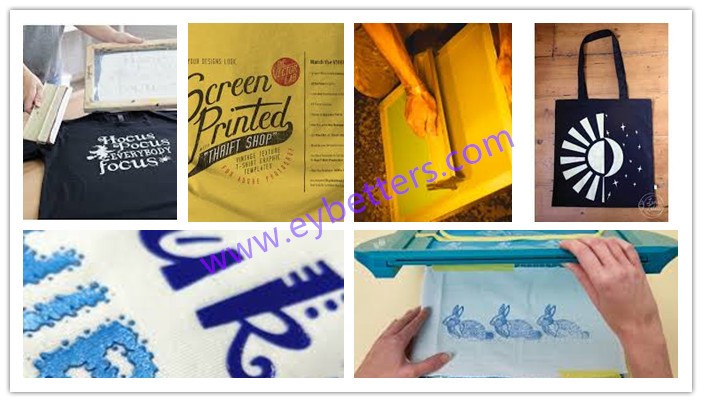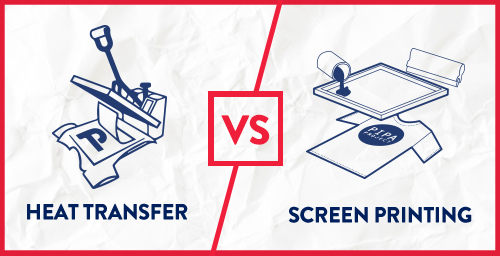The 7-Second Trick For Tx Tees
An Unbiased View of Tx Tees
Table of ContentsOur Tx Tees IdeasThe Of Tx TeesThe Buzz on Tx TeesGetting The Tx Tees To WorkLittle Known Facts About Tx Tees.Fascination About Tx TeesTx Tees Things To Know Before You Get This
Include up various other costs, like the number of utilities it takes to run the shop and the expense of ink and emulsion per design. Take the print listed below.The solution ought to just be a few cents given that you 'd only need to layer one screen for this work. So just how much should you charge per shirt to earn a profit? Typically, printers attempt to make up to 45% revenue on a print job. Below's a table to aid you determine that: total expense per thing percent of desired profit as a decimal (instance:.25 or.45) profit made per item per task Currently let's speak about the success of DTF.

With DTF, you can publish a handful of t shirts, or simply one. Both display printing and DTF have their specific niches in the globe.
The smart Trick of Tx Tees That Nobody is Talking About
The very best method to recognize? Ask around and see what print stores like your own are doing. embroidery shop. Try both out and see which you like much better
When you're picking what type of printing technique to make use of for printing your artwork styles on your garments, it's vital that you know the differences between these 2 strategies so you can take full advantage of outcomes while minimizing costs. Display printing is one of the most frequently utilized method for printing styles on fabrics.
DTG printing is additionally called place or direct to garment printing due to the fact that it publishes just what is needed as opposed to making a screen as screen printers do. https://forums.hostsearch.com/member.php?258490-txtees02&tab=aboutme&simple=1. Display printing works by screen filler squeegee display printing ink display mesh screen, then moving the image to garment using heat and/or stress
The DTG printer uses unique dye-sublimation inks that are used into a pre-designed photo by an electronic printing system. The inks end up being part of the fabric, permitting for lively colors and outstanding detail. It's additionally understood as spot or straight to garment printing due to the fact that it prints just what is needed as opposed to making a screen as screen printers do.
The Definitive Guide for Tx Tees
Initially, it's much faster - you can print a fullcolor photo in mins, rather than hours for display printing. Second, there's no established time or expenses involved - you can print any layout you such as, without having to produce a screen initially. Third, there's no waste - since display printers display print one style each time, they have to evaluate each shade individually.
The paper is extremely costly and can just be used once. Once it's published on, it needs to be disposed of. - The preliminary acquisition cost is reduced than the ahead of time financial investment of DTG printers- You can publish multi-color layouts one display at once rather than needing to publish each shade individually like DTG printing.

The Single Strategy To Use For Tx Tees
Nevertheless, as opposed to using screen mesh as display printers do, color sublimation printers utilize laser technology to move your images onto garments or paper. A warm process moves the dye from its solid-state straight into the gas phase which subsequently fuses it onto textile substratums when they are rapidly heated up to heats under high pressure.
Sublimation printing is eco-friendly. It utilizes less water than screenprinting, and since it doesn't include making use of dangerous solvents, it's safe for all sorts of garments. The dye sublimation inks are likewise odor free when healed, unlike screen printers that make use of dangerous chemicals during the screen printing procedure that leave behind an unpleasant smell.
They also conserve cash on costly devices like direct exposure units because dye sublimation printers do not call for a UV direct exposure unit or a flash remedy stove that is typically utilized in screen printing (custom screen printing). What is direct to garment printing (DTG Printing)? DTG printing is a digital screenprinting procedure that publishes directly onto textile using specialized inkjet printers
Some Known Questions About Tx Tees.
DTG printing provides several advantages over typical screenprinting, including the capability to publish photographic high quality pictures, greater shade vibrancy, and the ability to publish designs on darker materials. DTG printers work by warming the fabric ink up until it develops into a gas. The gas after that penetrates the more material, bonding with the fibers to create a permanent print.

Screen printers simply prepare their screen after that begin publishing until they lack product or ink.- There is a vast array of skilled display printers all over the world, which can be helpful for beginners. - It's a slower process - display printers typically need to await the ink to completely dry before they can print the following color- Screen printers require hand-operated labor, so there's a greater understanding contour and it takes longer to generate a high-grade style- Screen printing isn't as precise as DTG printing, so you might obtain some "bleeding" of shades from one component of the picture onto one more otherwise done appropriately.
The smart Trick of Tx Tees That Nobody is Discussing
Rather of using display mesh as screen printers do, color sublimation printers use laser modern technology to move your images onto garments or paper. A warmth process transfers the color from its solid-state straight into the gas stage which in turn integrates it onto material substratums when they are rapidly warmed to high temperatures under high stress.
Sublimation printing is green. It utilizes much less water than screenprinting, and since it does not involve making use of dangerous solvents, it's safe for all sorts of apparel. The color sublimation inks are also odor-free when cured, unlike display printers that use dangerous chemicals throughout the screen printing procedure that leave behind an unpleasant smell.
They also save cash on costly devices like exposure systems given that dye sublimation printers do not require a UV exposure system or a flash treatment oven that is usually made use of in screen printing. What is direct to garment printing (DTG Printing)? DTG printing is a digital screenprinting procedure that publishes directly onto material utilizing specialized inkjet printers.
Getting My Tx Tees To Work
DTG printing uses many benefits over traditional screenprinting, including the capability to print photographic quality images, greater color vibrancy, and the ability to publish layouts on darker textiles. DTG printers function by heating up the textile ink up until it develops into a gas. The gas then penetrates the textile, bonding with the fibers to produce a long-term print.